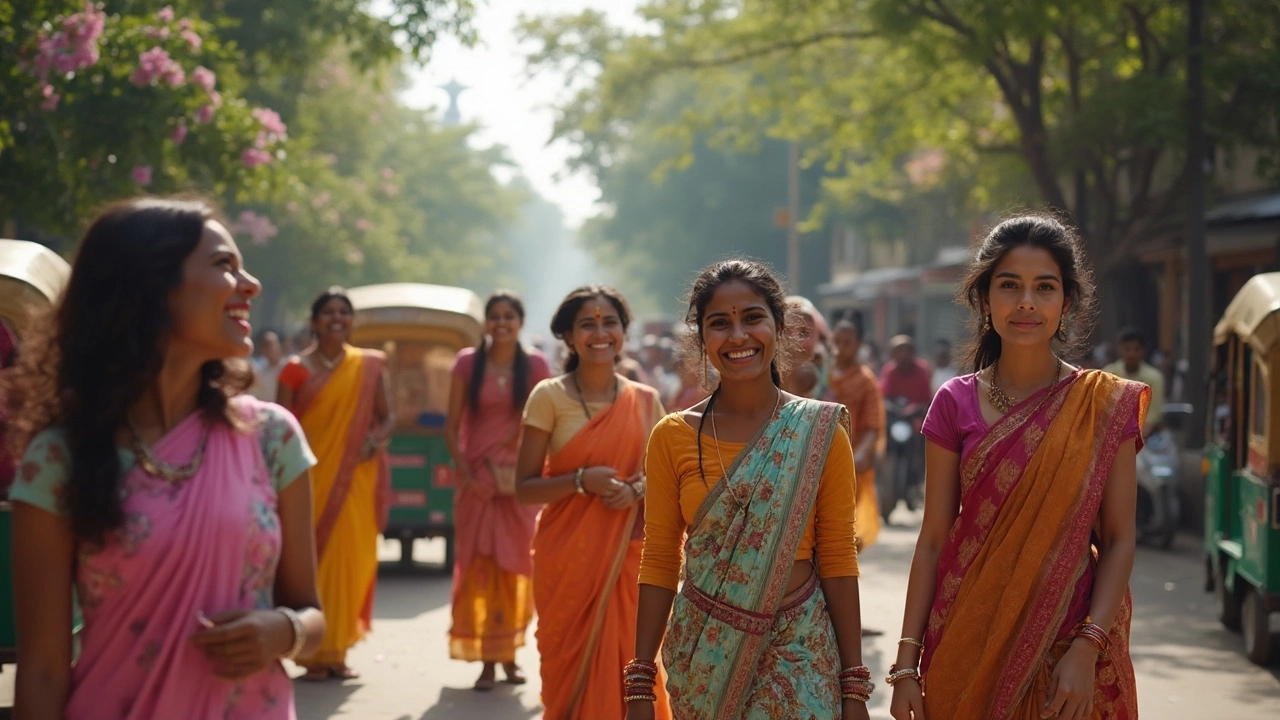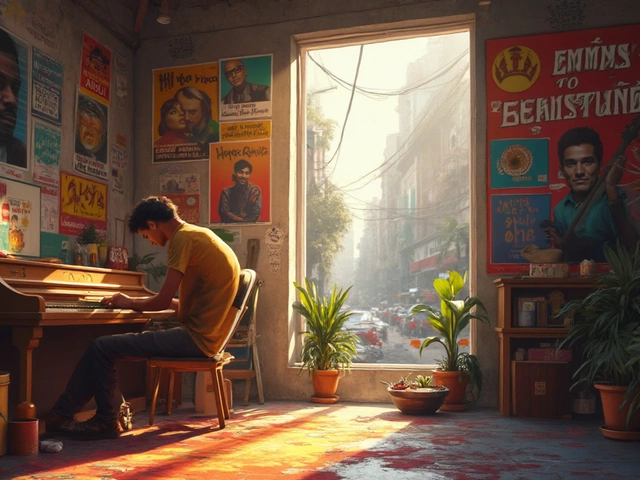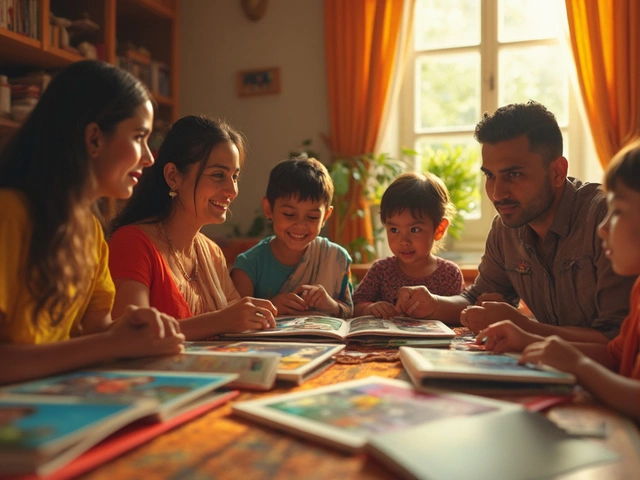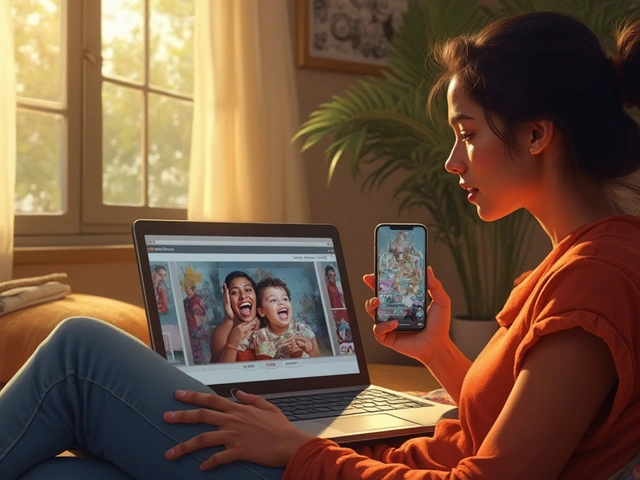Ever wondered if the face staring back at you in the mirror is the same one that everyone else sees? It's a fascinating question, isn't it? Mirrors show a reversed image of you, which might lead you to think that maybe others would see you differently. The truth is, everyone experiences this curiosity about their appearances when catching glimpses of themselves in mirrors, photos, or window reflections.
Now, when it comes to candid photography, especially in the lively and colorful streets of India, how you perceive yourself versus the lens's portrayal could stir some interesting realizations. In photos, factors like lighting, angles, and spontaneity can transform appearances, sometimes revealing sides of us we didn’t even know existed.
Understanding the basic physics behind a mirror's reflection can help set the record straight. A mirror flips the image, which might make your face look asymmetrical if your features aren’t perfectly balanced. But guess what? Real people don’t notice these tiny quirks. They're usually more interested in expressions and emotions than any imperfections. It's all about capturing the real and unstaged.
- The Mirror's Truth: Fact or Fiction?
- Physics of Reflection: What's Really Happening?
- Candid Photography in India: Capturing Real You
- Lighting and Angles: Why They Matter
- Tips for Better Self-Perception
- Embracing Natural Beauty
The Mirror's Truth: Fact or Fiction?
We've all had those moments standing in front of a mirror, wondering if that's really how we look to others. The fun fact? Mirror images actually turn our left and right sides. This flip can sometimes play tricks on our perception. But is it all just a funhouse mirror effect, or is there more to the story?
Though mirrors provide a reversed image, they're not entirely misleading. They give a true representation of individual features, but since symmetry isn't common in human faces, any imbalance looks more pronounced in reflection. While you may think you spot unusual quirks, others usually don't notice them.
Here's something done in studies: People often favor their mirror image over photos. Why? They're more familiar with it. It’s the face they see every day while brushing teeth or checking an outfit. These mirror habits paint a familiar—but slightly altered—picture of self.
- Emotions Matter: People noticing others are generally more tuned into emotions and expressions than, say, minor asymmetries.
- Angles and Lighting: These change how you appear in photos versus mirrors, making them look different.
So, is the mirror lying to you? Not exactly. It’s all about what you’re used to seeing daily. The real trick? Understanding that the candid photography lens can often catch the more natural side of you—where expressions and confident vibes truly shine through.
Physics of Reflection: What's Really Happening?
Alright, let's break down what's going on when you look in the mirror. First off, when light hits a mirror, it reflects off the surface in a way that flips the image horizontally. This is why your left eye appears as your right eye in the mirror. It's not magic—just plain old optics!
So, when you're staring at your mirror image, you're seeing something reversed. That's why photos sometimes shock people—they're not used to seeing themselves the way everyone else does. This effect is even more interesting in candid photography, where the camera captures these raw and unflipped moments, offering a glimpse into how others really see you.
Think about this: mirrors show width but not necessarily depth or perspective like a camera does. A mirror can't capture shadows and lighting in quite the same way. In a photo, you'll see more texture because of the depth captured, whereas a mirror's reflection is about surface-level appearances.
The next time you glance at your reflection or see a candid shot popping up on social media, remember: it's just different lenses and angles but ultimately still you. Cameras and mirrors aren't betraying you; they're just revealing different facets of the same person.
Candid Photography in India: Capturing Real You
Candid photography is more than just a trend; it's a slice of life captured in a snapshot, especially in a vibrant place like India where every corner tells a story. Here, the true essence of a person can be caught unexpectedly, showing raw emotion and genuine moments.
India, with its bustling streets, colorful festivals, and diverse cultures, offers a perfect backdrop for candid photography. Capturing someone lost in conversation at a busy chai stall or a child absorbed in kite flying during Makar Sankranti are moments that reflect authenticity, unlike a posed picture.
The charm lies in the invisibility of the camera. A good candid photo does not disrupt the subject but rather quietly becomes a part of the scene. This approach has grown in popularity in India, reflecting a shift from traditional posed portraits to a love for capturing life's spontaneity.
The best part? You don't need an elaborate setup. Photographers often rely on natural light to add warmth and depth to their photos, subtly highlighting the subject's natural features. The key is to be observant and quick, ready to snap a shot as the moment unfolds before it slips away.
For budding photographers, here are some quick tips to nail that perfect candid shot:
- Stay Invisible: Keep a low profile to ensure you don't disrupt the scene.
- Use a Zoom Lens: This lets you capture details without getting too close.
- Be Patient: Candid shots require a keen eye and the patience to wait for the right moment.
- Practice Discretion: Be respectful and mindful of personal space.
So, next time you're stepping out into the vibrant streets of India with your camera, remember it's about letting people be themselves and allowing their stories to unfold naturally.

Lighting and Angles: Why They Matter
You know how sometimes you look at a photo and think, "Whoa, that's not how I usually look!"? Well, that might be because of lighting and angles, which play a huge role in how you appear in pictures. Good lighting can highlight your features, while poor lighting might create shadows that aren't the most flattering.
First things first, let's talk about lighting. Natural light is your best friend when it comes to photography, especially during the golden hours—right after sunrise and just before sunset. The soft light at these times can give your skin a dreamy glow, unlike the harsh overhead sun that might bring out things you’d prefer not to see.
If you're indoors, avoid harsh lighting directly above you. Instead, use lights that are diffused, like a lamp with a shade or indirect sunlight from a window. This spreads the light evenly across your face, minimizing shadows.
Now, onto angles. This is where a little experimentation goes a long way. Ever noticed how some people always get their best side in pictures? It's all about finding the right angle that suits your face structure. Holding the camera slightly above your eye line can help define your jawline. Meanwhile, shooting from below might make your forehead appear larger. Balance is key, and with a bit of practice, you'll discover which angles work best for you.
- Experiment with different light sources until you find what works best for you.
- Try taking photos at different times of the day to understand how natural light affects your look.
- Play around with camera angles and watch how they change the focus on your features.
In India, with its vibrant colors and varied landscapes, candid photography thrives. Whether you're capturing a bustling market or a serene rural backdrop, understanding lighting and angles can make your photos visually striking, showing a real and authentic version of yourself.
Tips for Better Self-Perception
Want to feel good about how you look both in the mirror and in photos? It’s all about understanding what actually counts when it comes to self-perception and being open to seeing yourself in a new light.
First thing, stop being so critical of every detail. Everyone has their unique traits, and that’s what makes you, well, you! Instead of focusing on what you think are 'flaws,' try to notice the features you like. Maybe it's your smile or how your eyes light up when you laugh.
Another tip, practice self-compassion. You wouldn’t nitpick a friend’s appearance, so why do it to yourself? Cut yourself some slack. This mindset shift can significantly boost your self-image.
Here’s a straightforward exercise: each day, find something positive about yourself. It could be anything from a feature you like or an outfit that looks great on you. Jot these down, and you'll start to notice a positive change in how you see yourself over time.
Let's talk candids, especially in the vibrant world of candid photography. When someone snaps a spontaneous picture, it's capturing a moment, a feeling, not a perfectly posed shot. It's real and raw, often showing the charm that staged photos miss out on. Embrace this authenticity and the stories those candid shots tell.
If you're getting your picture taken, think about your posture and natural angles. This is a quick way to up your photography game. Stand up straight but relaxed, and tilt your head slightly. Play around with different expressions, and you're more likely to find the angles that work best for you.
Loved by pros, good lighting can make a world of difference. Natural light is usually the most flattering, so whenever you can, aim to have your photo taken outside or near a window during the golden hour—just after sunrise or before sunset.
By making these small, conscious changes, you’ll discover a better and more positive sense of self, both inside and out. Remember, the best reflection lies in how you see yourself, not just in the mirror image or photographs.
Embracing Natural Beauty
Alright, let’s talk about something many of us struggle with: accepting our natural beauty. We often compare ourselves to the picture-perfect images we see online or even those reversed mirror images that make us feel a little off. But here's the deal—true beauty shines when we're comfortable in our own skin.
One of the key things to remember is that beauty isn’t just about a flawless face or perfect hair. It’s also about the energy and confidence you carry. Ever notice how the people with a genuine smile become instantly attractive? That’s something no mirror or camera can replicate!
Photography, especially candid photography, thrives on capturing these genuine moments. In India, these types of photos often become the most cherished, precisely because they show the true essence of a person amidst vibrant settings. The imperfections, the laughter lines, the little quirks—those are what make each of us unique and memorable.
To really embrace your natural beauty, consider these practical tips:
- Acknowledge what you love about yourself; celebrate it.
- Practice positive affirmations—look in the mirror and say nice things to yourself every day.
- Choose outfits that make you feel good, not just because they're trendy.
- Spend time with people who uplift and appreciate you.
- Limit comparison with others, especially on social media.
If you ever doubt yourself, remember, even the most famous people have photogenic qualities that aren’t always captured or appreciated until seen through the right lens. In the end, embracing what makes you uniquely you is what counts the most.





